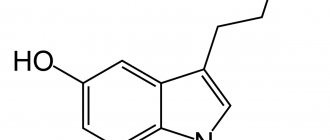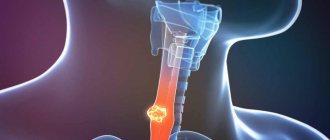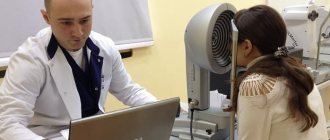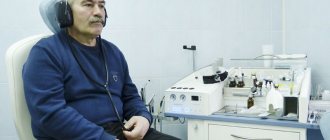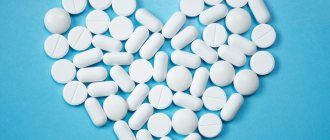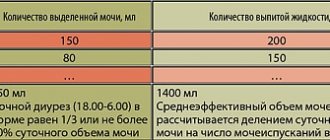Diseases associated with disorders of the acidity of the gastrointestinal tract can be traced on average to half of the adult population of the planet. This category of gastrointestinal pathologies includes a number of syndromes described in the International Classification of Diseases, 10th revision. Particularly common:
- gastritis,
- duodenitis,
- gastroesophageal reflux disease (GERD),
- gastrointestinal ulcers,
- gastric dyspepsia.
Gastritis is observed in 80 percent of the population, gastric dyspepsia affects 30-35 percent. It is quite clear that with such disappointing statistics, the problem of curing gastrointestinal pathologies is especially pressing. To treat these diseases, drugs that belong to the classification of proton pump inhibitors are often used.
What is a proton pump?
Proton pump inhibitors curb acid production in the stomach
Pump is a technical term meaning one type of pump. And it’s a little strange to see this name in the anatomy of the human body. However, the term proton pump, applied to hydrogen-potassium adenosine triphosphatase, can explain the function of this enzyme protein in moving positive electrons across the intercellular septum.
A proton pump is also called a proton pump. This is a complex polypeptide chain consisting of amino acid residues and containing positive hydrogen and potassium ions in its structure. H+/K+-ATPase was isolated forty years ago as an enzyme protein hydrolase, and at the same time it was called a proton pump. It takes part in the production of hydrochloric acid and the enzyme that converts vitamin B12 from a passive form to an active one.
Hydrogen-potassium adenosine triphosphatase is found in the parietal cells of the gastric mucosa. They also form hydrochloric acid. It transfers positively charged hydrogen protons (H+) from the cytoplasm of the parietal (mural) cell into the gastric cavity through the upper intercellular septum. At the same time, potassium ion (K+) moves into the cell. At the same time, chlorine anions (CL-) are transported to the stomach area.
H+ protons are released as a result of the decomposition of carbonic acid (H2CO3) under the action of the enzyme carbonic anhydrase. The remaining cations (HCO3-) are transferred to the blood instead of chlorine cations, which move to the stomach and combine with hydrogen there to form hydrochloric acid molecules. Thus, hydrochloric acid is released into the lumen of the stomach with the participation of H+/K+-ATPase in the form of H+ and Clв€' ions, and K+ ions move back through the membrane.
Legal aspects
Today it is clear that the interaction of H. pylori
with the human body is complex, to some extent individual and not fully understood.
The physician should know that H. pylori
reduces the risk of esophageal diseases (including malignant ones) [12–14], bronchial asthma and atopy, and possibly obesity and diabetes mellitus, and take this into account when prescribing treatment [15].
What should a practicing physician do in a situation of conflicting clinical recommendations? It is often claimed that eradication of H. pylori
is indicated for everyone who has it, based on various protocols, standards and clinical recommendations.
In order for the doctor not to find himself in a difficult legal situation, it is very important for him to know the basic provisions of Federal Law No. 323 “On the fundamentals of protecting the health of citizens in the Russian Federation.” On December 18, 2022, the President of the Russian Federation signed Law No. 489-FZ “On Amendments to Article 40 of the Federal Law “On Compulsory Health Insurance in the Russian Federation” and the Federal Law “On the Fundamentals of Protecting the Health of Citizens in the Russian Federation” on Clinical Recommendations.” The use of clinical recommendations in our country has become regulated not just by an order of the Ministry of Health of Russia, but by the amended Federal Law No. 323, Article 37 of which stipulates that clinical recommendations must be approved in the established manner before December 31, 2022. Previously approved clinical recommendations (treatment protocols) are applied until their revision in accordance with Federal Law No. 489 of December 25, 2022 only until December 31, 2021. From January 1, 2022, only those clinical recommendations that are posted on the official website of the Russian Ministry of Health will be in effect. Moreover, for each disease, condition (group of diseases, conditions) for adults and children, no more than one clinical recommendation can be approved and approved, respectively. For peptic ulcer disease, clinical guidelines have existed since 2022. They recognize peptic ulcer disease after surgical treatment as the only basis for eradication of H. pylori
(recommendation level A, level of evidence certainty 1) [16].
What are proton pump inhibitors and what are they for?
Omez: capsules
Inhibition means holding back. In this case, it is the inhibition of HCl synthesis. The purpose of proton pump inhibitors is to suppress the production of hydrochloric acid in the stomach, which is achieved by blocking the transport of potassium and hydrogen ions from the cell. Inhibition has proven effective in the treatment of acid-dependent gastrointestinal diseases, such as
- gastroesophageal reflux disease,
- esophageal dyspepsia,
- stomach ulcer,
- duodenal ulcer,
- chronic gastritis,
- duodenitis.
Proton pump inhibitors block the production of hydrochloric acid to varying degrees. These drugs do not become addictive and there are no side effects. Therefore, this category of drugs was adopted by the World Congress of Gastroenterology in 1988 in Rome as the main group of acid-regulating drugs.
Causes of heartburn
The most common cause of heartburn is gastroesophageal reflux disease (GERD). It occurs in 83% of patients with this problem. In addition to heartburn, symptoms such as:
- regurgitation, esophageal vomiting, belching;
- salivation;
- pain when swallowing food;
- difficulty passing food;
- hoarseness of voice;
- nasal congestion;
- coughing;
- glossitis;
- interruptions in heart function.
In addition to gastroesophageal reflux disease, heartburn may be closely associated with:
- Peptic ulcer of the stomach and duodenum.
- Stomach cancer.
- Functional dyspepsia (a group of diseases that do not lead to changes in the structure of the digestive organs, but cause disturbances in their functions).
Many medications have the property of reducing the tone of the lower esophageal sphincter, which can lead to reflux of contents into the esophagus or themselves cause inflammation. Hormonal, antihypertensive, and anti-inflammatory drugs may have such side effects. Therefore, you need to read the instructions carefully.
Many medications can cause heartburn.
The cause of heartburn can be increased intra-abdominal pressure and conditions leading to this:
- pregnancy;
- ascites;
- flatulence;
- hepato-splenomegaly;
- constipation;
- chronic obstructive pulmonary disease, etc.
Without treating the underlying disease, taking heartburn medications will not only not help in the future, but will also mask the symptoms of the underlying problem.
Pain due to coronary heart disease can be confused with heartburn.
Mechanism of action of PPIs
Proton pump medications are taken orally, in the form of tablets or capsules. From the stomach, the drug penetrates into the small intestine, where it is dissolved and absorbed into the blood, which first transfers inhibitor molecules to the liver, and only then do they enter the parietal cells of the gastric mucosa, where they accumulate in the secretory tubules.
PPIs are converted into tetracyclic sulfenamide, which does not leave the secretory tubules, binds to ionic residues of the pump and blocks it. Thus, H+/K+-ATPase is excluded from the process of hydrochloric acid formation. In order for this process to resume, the production of a new enzyme H+/K+-ATPase is needed, which occurs after 1.5-2 days. This time determines the duration of the therapeutic effect of proton pump inhibitors.
When using the drug for the first time or once, its effectiveness is not so significant, since not all proton pumps are currently embedded in the secretory membrane, some of them are located inside the cell. These microparticles, together with newly synthesized hydrogen-potassium adenosine triphosphatases, appear on the membrane, they interact with subsequent doses of the drug, and its antisecretory effect is completed.
Antisecretory therapy allows you to stop diseases that depend on the concentration of hydrochloric acid. Thus, a duodenal ulcer heals when the pH is maintained above 3 for 18–20 hours a day; For the treatment of GERD, a pH of more than 4 is required; the bacterium Helicobacter pylori is destroyed in a slightly acidic environment at a pH of more than 5.
What is pH?
Proton pump inhibitors
Here let me make a small digression in which you will find an explanation of the pH value (pH). This is needed to further explain the acidity of the gastrointestinal tract and how PPI medications work.
The pH scale of the hydrogen number, which determines the acid-base nature of liquid substances and solutions, can be compared to a mathematical straight line on which positive and negative numbers are located.
The pH value is 14 units. The chemically neutral substance water (compared to zero on a mathematical scale) is pH7. Substances with a pH less than 7 are acidic. Those above the number 7 are alkaline. Accordingly, the lower the pH number, the higher the acidity of the substance or solution, and vice versa, the higher the pH, the lower the acidity, but the level of the alkaline environment increases.
Helicobacter pylori and PPIs
There are 5 generations of proton pump inhibitors in total
Speaking about acid-dependent diseases and the causes that give rise to them, one cannot help but recall the gram-negative spiral-like bacterium Helicobacter pylori, since scientists have come to the conclusion that this bacterium is a kind of catalyst, a trigger for the occurrence of these diseases.
And it is this bacterium that settles in the stomach that provokes inflammatory relapses of the gastrointestinal tract. Therefore, therapy for acid-dependent pathologies is carried out in combination with antibiotics of the tetracycline group, and in particular with Metronidazole.
Preventing recurrent heartburn
There are some rules that can help reduce the symptoms of heartburn.
To prevent heartburn, you need to follow simple rules that will help reduce the load on the stomach and reduce unpleasant symptoms:
- Small portions of food 4-5 times a day.
- Reduce consumption of very spicy, salty, fatty foods.
- Avoid carbonated drinks and foods that cause gas (soda, beer, simple carbohydrates)
- Raise the pillow 15-20 cm while sleeping.
- Try not to eat before bed and not to lie down after eating.
- Give up bad habits (alcohol, smoking).
- Reduce excess weight.
- Do not lean forward too much and do not strain, avoid lifting weights of more than 8-10 kg (do not strain your abdominal muscles).
- Remove corsets and tight belts from your wardrobe, wear looser clothes that do not squeeze your stomach.
Work on the IPP continues
Five generations of proton pump inhibitors are widely approved and used successfully. Six years ago, a new drug, Dexlansoprazole, was released to the market and approved for use in the treatment of GERD. A new IPN is currently being developed and tested in Japan. This is Tenatoprazole. It is an imidazopyridine derivative. True, some experts believe that this drug generally repeats previous generations.
A little earlier in Korea, Ilaprazole was developed, which is 2-3 times more effective than Omeprazole. But in the USA, EU countries and Russia there is no permission for its use. Now Japan is trying to promote this drug to the Western market.
About the safety of proton pump inhibitors - in the video lecture:
Conclusion
Self-medication can be practiced for mild, rare symptoms. For this purpose, drugs from the group of antacids and alginates are used, and a single dose of Ranitidine 75 mg is also possible. If heartburn bothers you more than once a week , you need to consult a doctor . Taking medications should not be uncontrolled. Self-administration should not last longer than 7-10 days. Otherwise, you may not notice other serious diseases in time, one of the symptoms of which may be heartburn.
![Table 1. Side effects of PPIs [1, 4–7] (end) Table 1. Proton-pump inhibitors side effects [1, 4–7]](https://laram-halal.ru/wp-content/uploads/tablica-1-pobochnye-effekty-ipp-1-4-7-okonchanie-table-330x140.jpg)

